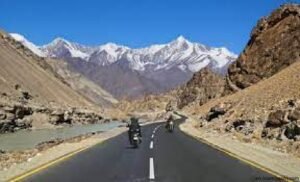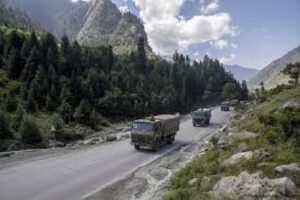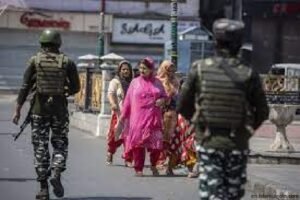Today we will discuss KASHMIR: KEEP IT TOGETHER

KASHMIR: KEEP IT TOGETHER
Neither liberalism nor democracy admits ruling people against their will. Democracy is not about ruling people, it is about a periodic selection of a group, by the people, for exercising power on their behalf for a defined time frame.
I think it is unfair to describe the relationship of Kashmir with the rest of India in terms of colonialism of a hue different from the classic one or to compare it with Junagadh, the tiny Muslim state in Gujarat, that had acceded to Pakistan but later integrated with India.
As far as Kashmir is concerned, the Maharaja had signed a standstill agreement with Pakistan on 15 August 1947, that the ‘existing arrangements should continue pending settlement of details and execution of a fresh agreement The Maharaja had approached India also but received no positive response.
The Indian attitude can be judged from what V.P Menon has written in the ‘Integration of States’ ‘We wanted time to examine its implications. We left the state alone. I for one had simply no time to think of Kashmir’.
But despite the agreement Pakistan imposed an economic blockade on Kashmir to bring pressure on the Maharaja to accede to Pakistan. In October it organized an invasion of Kashmir by army regulars in the guise of tribals.

The invaders entered Muzaffarabad on 22 October 1947 and indulging in a spree of loot and arson reached Baramulla on 27 October. They created such mayhem that out of the 14,000 people in this predominantly.
Muslim town, only 3,000 survived. This situation forced the Maharaja to dispatch his envoy to Delhi requesting aid on 24 October but India made it clear that Indian troops could be sent only to an area that was part of India, and Kashmir could do so by signing the instrument of accession.
The Indian troops landed in Srinagar on 27 October only after the Maharaja had duly signed the accession instrument. Sheikh Abdullah, who was present in Delhi, also endorsed the request for Indian assistance with accession.
The important question is who resisted the invaders for five days till Indian help arrived. This question has been best answered by T. N. Dhar, a long-time critic of Sheikh Abdullah. He has written: The National Conference leaders considered it a breach of trust and a challenge to the self-respect of Kashmiris and since the organization was deeply entrenched at the grass-root level the entire population was electrified with repulsion for Pakistan’ Not just National Conference volunteers, the entire population stood up against the Pakistani invaders and supported Kashmir’s accession to India.
On the other hand, in Junagadh, before Independence, the Nawab. repeatedly expressed solidarity with the surrounding Kathiawar states and on 22 April 1947, the official Gazette of Junagadh reproduced a speech of the Junagadh prime minister categorically repudiating allegations that Junagadh was thinking of joining Pakistan. The constitutional adviser of the Nawab informed Mountbatten that he had advised the ruler to accede to India.

However, on 15 August 1947, Junagadh, a state that had no common boundary with Pakistan, announced accession to Pakistan under the advice of the new prime minister who was a member of the Muslim League. After receiving this information the Government of India sent a note to Pakistan on 21 August, explaining that India found it necessary to consult the views of Junagadh’s population and asking for an indication of Pakistan’s policy in this matter.
Further, on 12 September, a telegram was sent to Pakistan stating that India would abide by the verdict of the people of Junagadh. The only reply that India received the next day was that Pakistan had accepted the accession of Junagadh.
It is true that India had stationed troops outside Junagadh, but it did not intervene militarily. It is important to remember that there were autonomous states inside Junagadh, which had already announced their accession to India and asked for Indian protection.
It was not the military action by India but a popular uprising against the nawab that forced him to flee to Pakistan by the end of October Later, the Prime Minister of Junagadh wrote to Jinnah explaining the difficulties of Junagadh and through another communique requested the Government of India to take over the administration, which was done on 9 November 1947.

Pakistan wanted to have Kashmir because it had a Muslim majority and Hyderabad, Junagadh, and Manadar because the rulers in these states were Muslims. But the people of these states were against acceding to Pakistan and hence they became part of India.
The boundaries of a country are not drawn every day to pacify one agitating group here or there. Pakistan could survive as a nation and as an idea even after losing Bangladesh because it was created on the basis of a divisive ideology. On the other hand, India can survive as a nation but not as an idea if it allows another partition on the basis of religion. India is more than a country; it is an idea that must be defended and protected at all costs.
See more:

1 thought on “KASHMIR: KEEP IT TOGETHER”